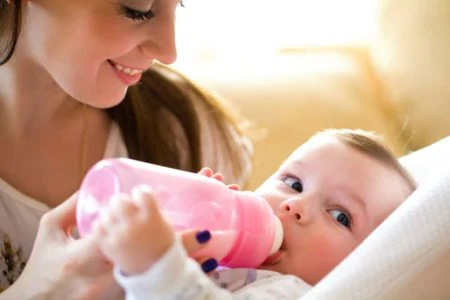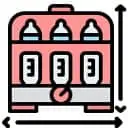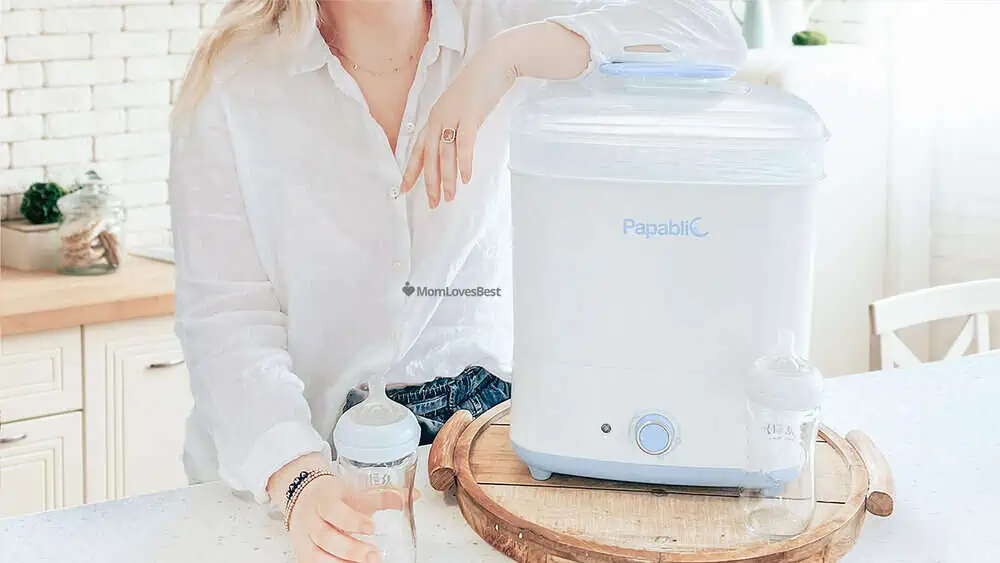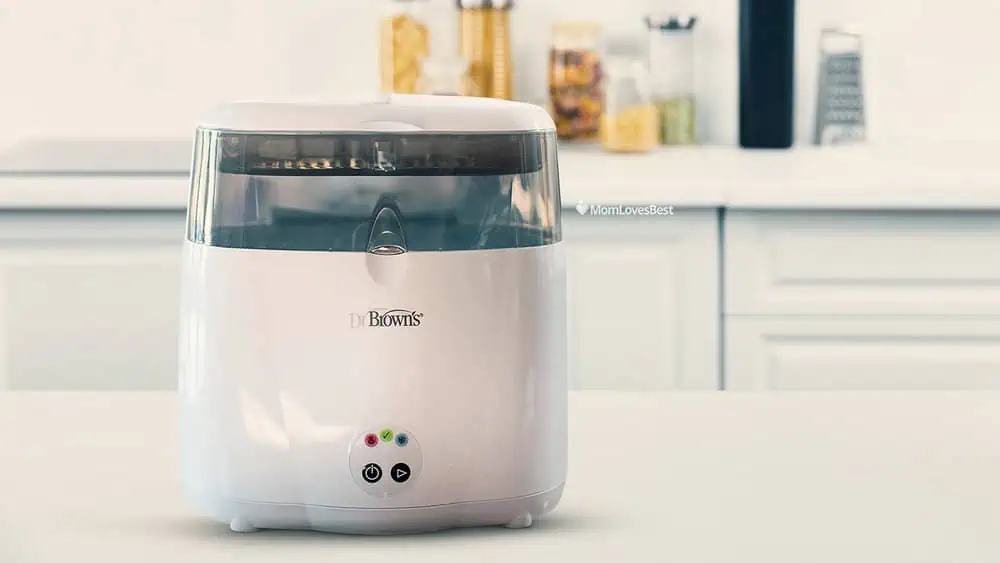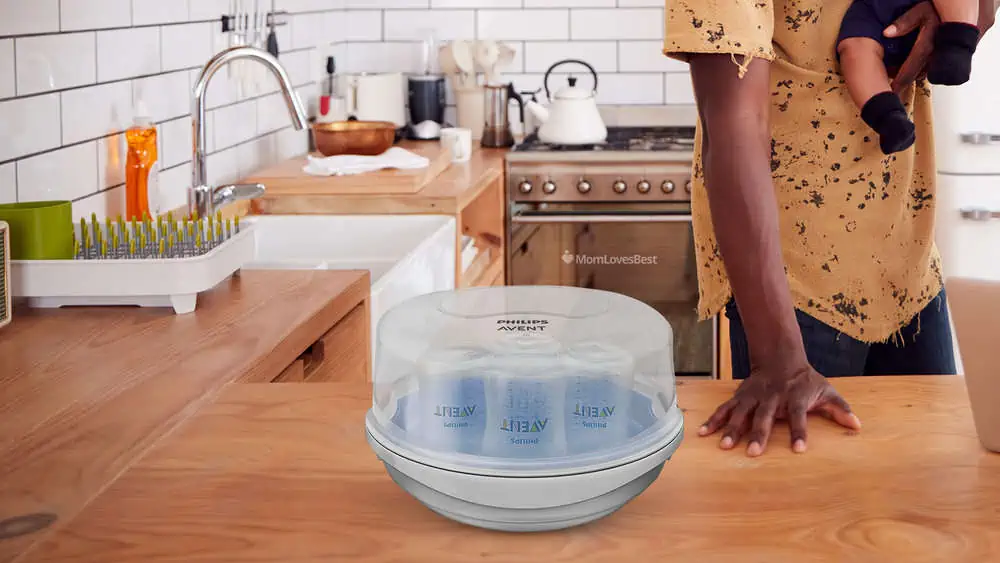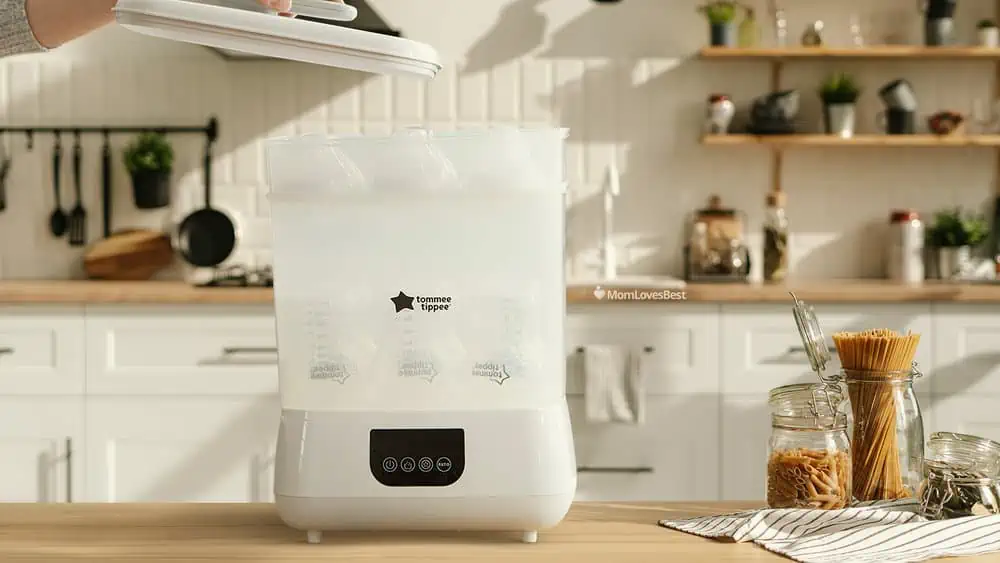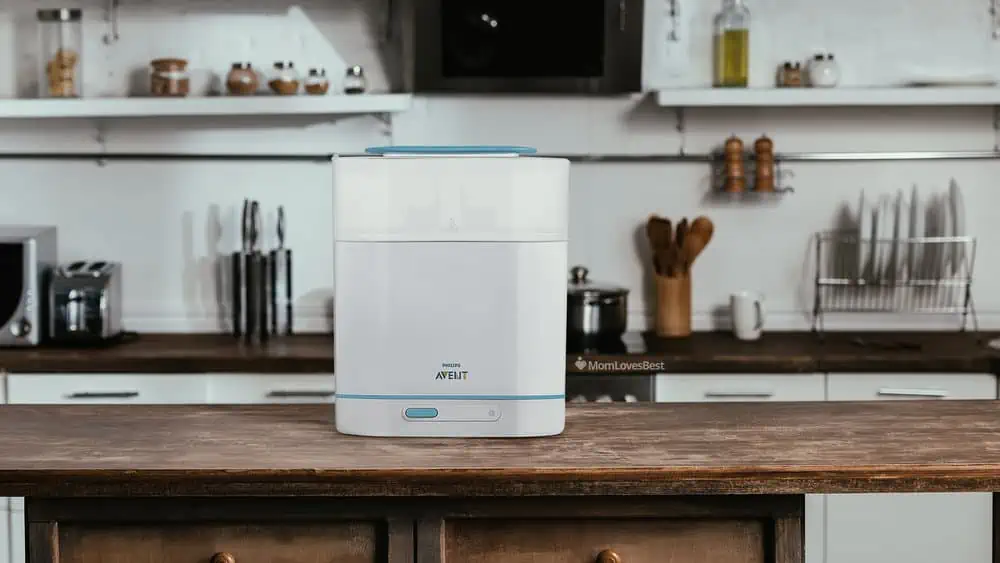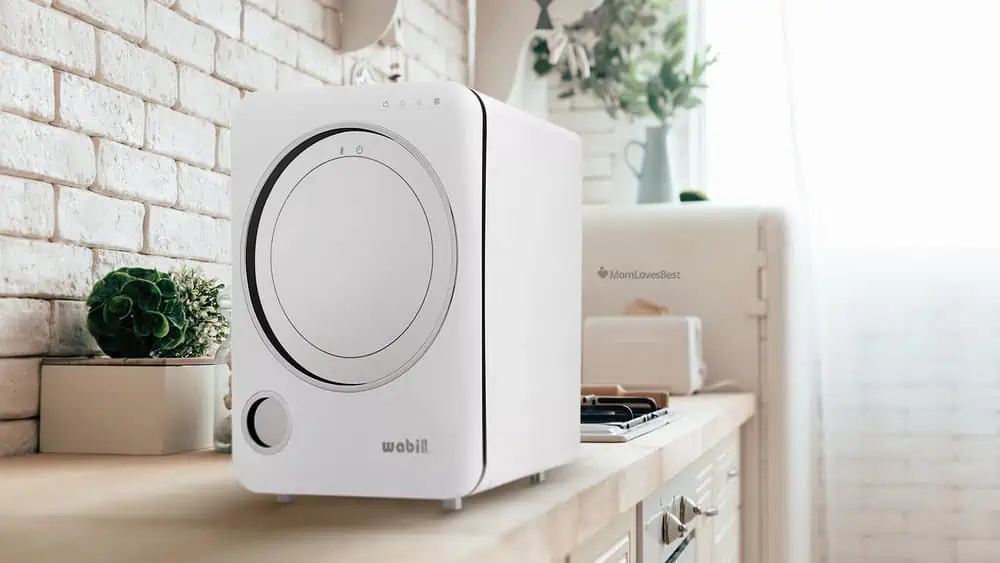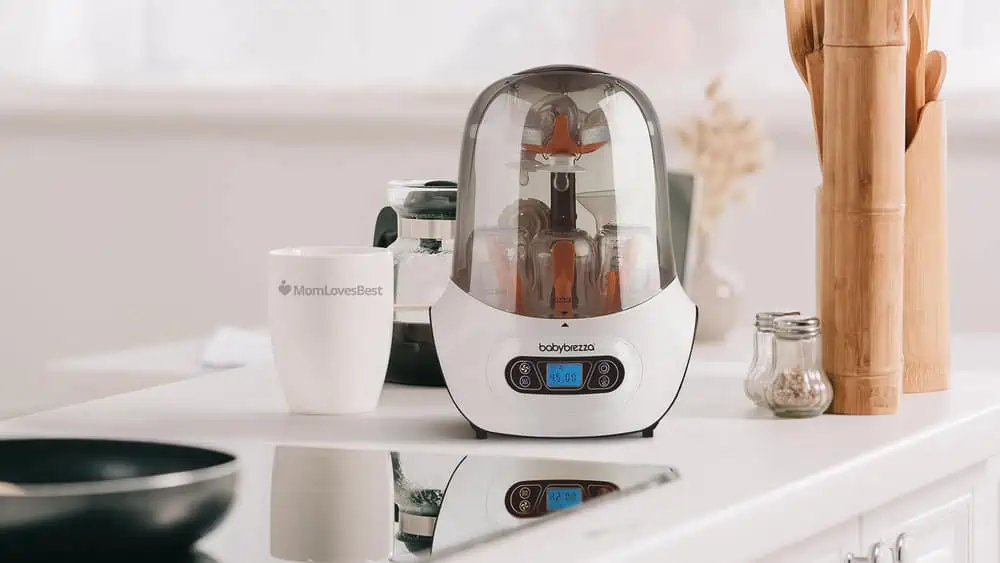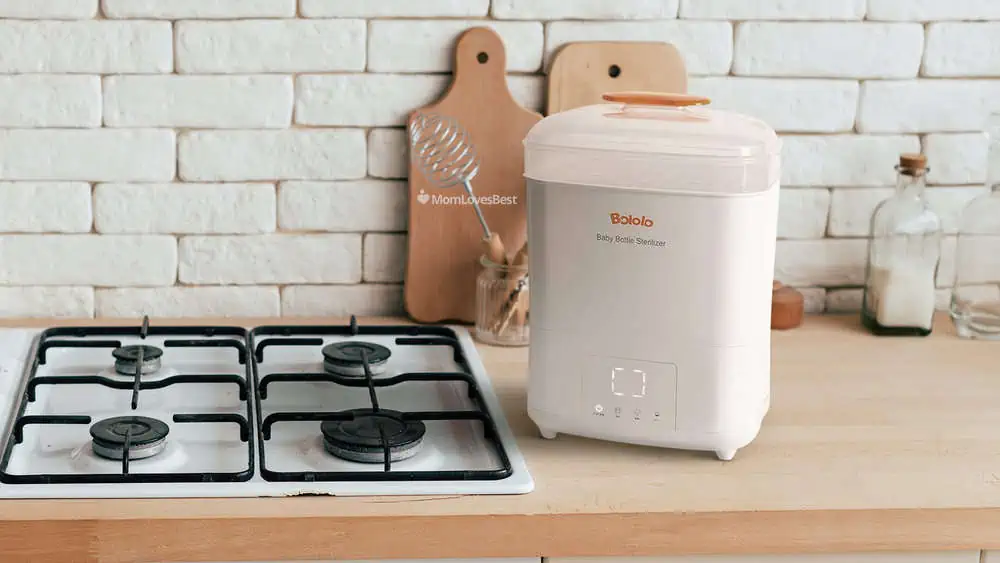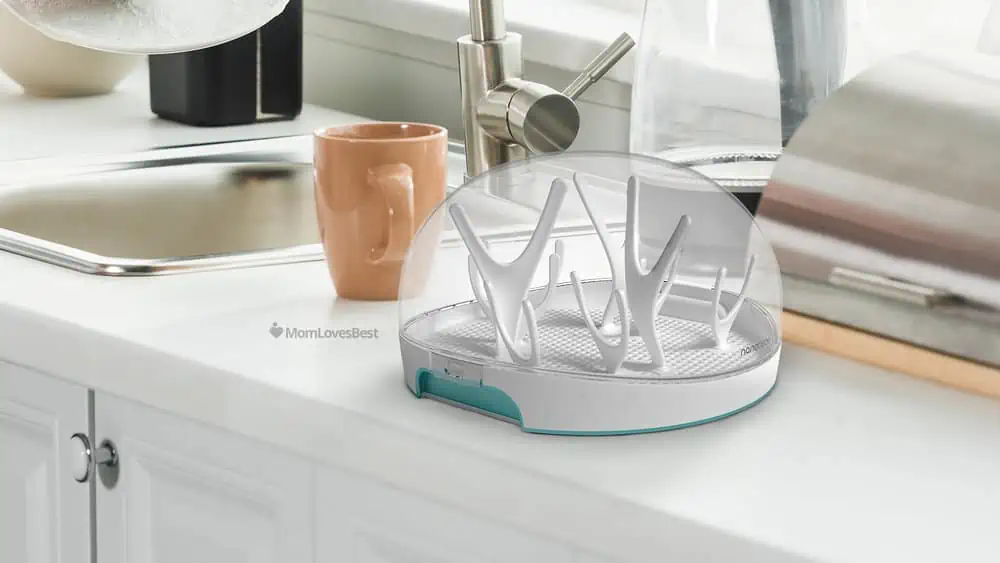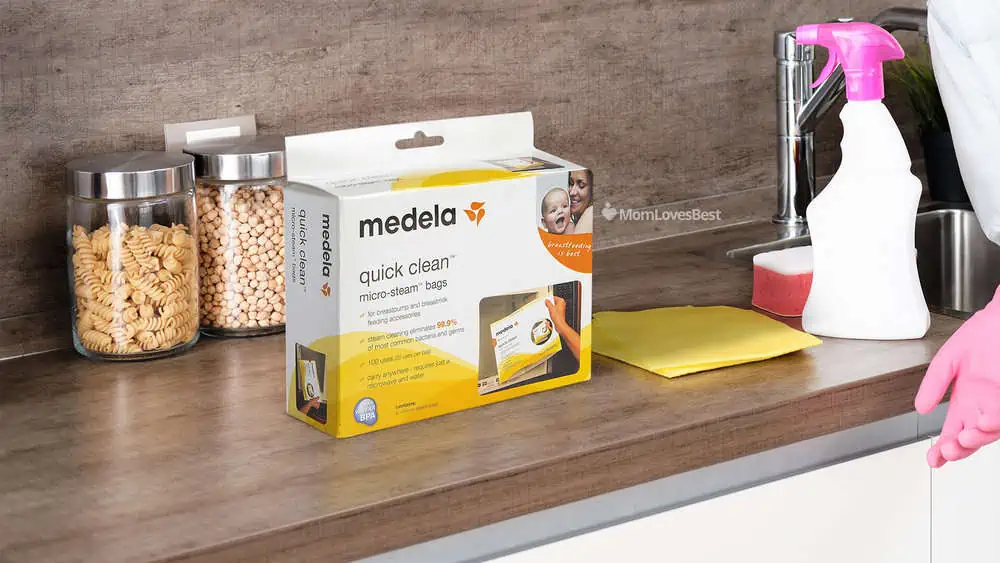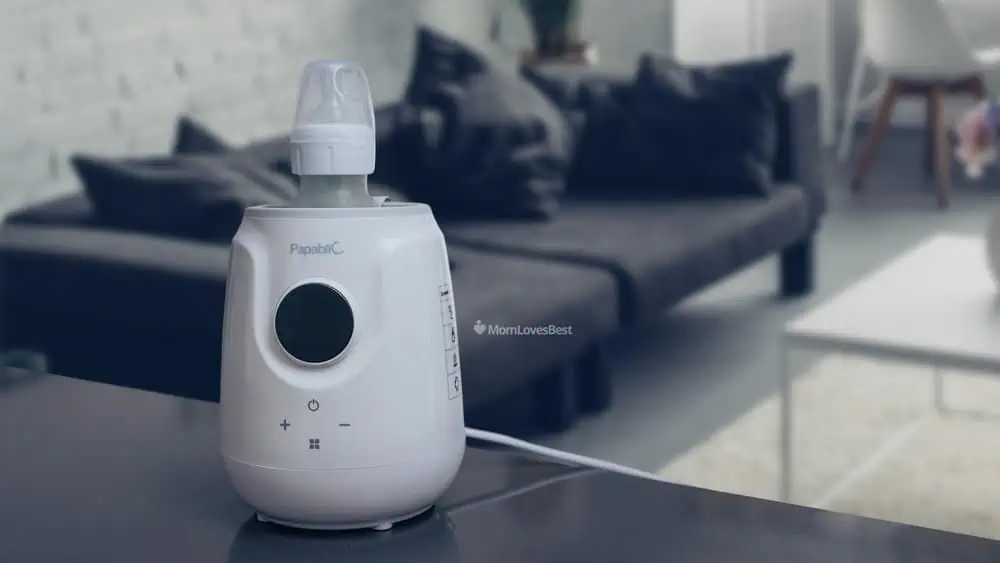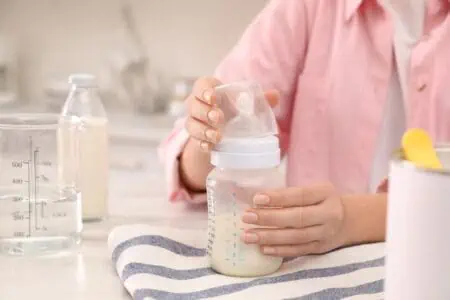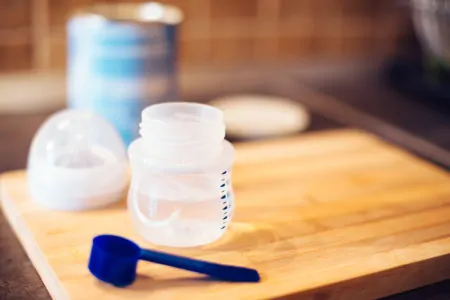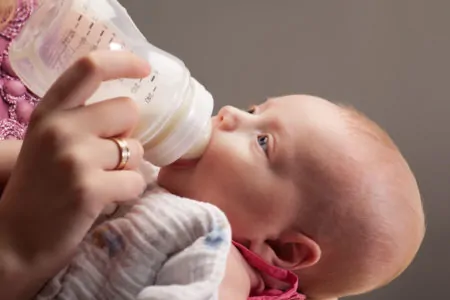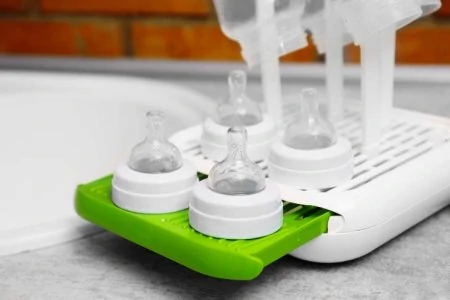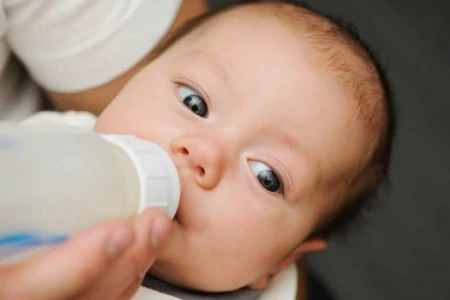The best baby bottle sterilizers kill 99.9% of harmful bacteria in minutes, saving you time and worry. To help you find the right match for your counter space and budget, we’ve rounded up the top-rated sterilizers on the market.
- Can handle very large loads
- Dries bottles thoroughly
- Quicker sterilization cycle
- Includes several accessories
- Cycle indicator
- Comes with an accessory tray
- Cheaper than other options
- Sterilize four bottles at a time
- Sterilizes in under 2 minutes
- Takes up less kitchen space
- Kills 99.9% of germs and bacteria
- Automatic shut off feature
- Uses UV rays to dry and sterilize
- Multiple setting options
- Eliminates 99.9% germs and bacteria
- Fits every size and shape
- Multifunctional
- Sterilizes various breastfeeding utensils
- Accommodates variety of bottle brands
- Fits up to 12 bottles
- Safe filtration system
- Most affordable microwave sterilizers
- Multi-purpose steamer
- Heat-resistant rubber handles
- Very affordable
- Convenient, compact, easy to use
- Portable design for trips away
Key Takeaways
- Health Priority: Sterilizing is highly recommended for babies under 3 months, those born prematurely, or those with weakened immune systems.
- Drying Matters: Bacteria loves moisture. Sterilizers with a built-in drying function (or HEPA filters) keep bottles cleaner than air drying on a rack.
- Capacity: If you use formula, look for a large electric unit that holds 6+ bottles. Breastfeeding moms may only need a compact microwave option.
- Maintenance: Steam sterilizers require distilled water to prevent scale buildup and need regular descaling to last.
Do I Need to Sterilize My Bottles?
While sterilizing isn’t mandatory for every single feeding session forever, most pediatricians and the CDC recommend it, especially for the first few months.
A baby’s immune system is still developing. When you’re a new parent, germs seem to be everywhere. You can’t stop every relative from touching your baby’s cheeks, but you can control what goes into their mouth.
Sterilizing cuts back on the germ load your baby fights daily. If your baby was born prematurely or has a compromised immune system, daily sterilization is crucial. For healthy, older babies, a dishwasher with a sanitize cycle might suffice, but a dedicated sterilizer offers peace of mind and ensures residue-free cleaning.
How to Choose a Baby Bottle Sterilizer
Here is what to look for when hunting for the perfect sterilizer.
Different Ways to Sterilize a Bottle
There are several methods to banish bacteria, ranging from free to high-tech.
1. Boiling
The classic method involves boiling bottles in a pot of water for at least 10 minutes. It’s free and requires no special equipment, but it carries risks. It wears down silicone nipples faster and plastic bottles can degrade or leach chemicals if overheated. Plus, it’s a hazard to have a pot of boiling water on the stove when you’re distracted by a crying baby.
2. UV Light
UV sterilizers look like mini-fridges or toaster ovens. They use ultraviolet bulbs to kill germs without water or heat.
- Versatility: You can sterilize phones, remotes, and soft toys since there is no moisture.
- Cost: They are significantly more expensive than steam units.
Pros
- Effectively kills 99.9% of germs, viruses, and bacteria.
- No descaling or water mess.
Cons
- Bulbs degrade and need replacement eventually.
- Takes longer (often 45+ minutes) than steam.
3. Cold Water Sterilizing Solution
This involves dissolving a chemical tablet (like Milton) in cold water and soaking the items. It’s great for camping or travel where electricity is scarce.
Pros
- Very affordable and portable.
Cons
- Leaves a slight chlorine smell/taste.
- Can take longer (15–30 minutes) to be effective.
4. Steaming
This is the most common modern method. Steam kills germs quickly (usually in under 10 minutes) and reaches into nooks and crannies better than boiling water.
Microwave Steamers
You fill the base with water, add the tray of bottles, and zap it.
Pros
- Inexpensive and fast (2–4 minutes).
- Great for travel or grandma’s house.
Cons
- Major burn risk when removing from the microwave.
- Doesn’t dry the bottles; they remain wet.
Electric Steamers
These countertop appliances offer the most convenience and capacity.
Pros
- Often include drying cycles and storage modes (sterile for 24 hours).
- Larger capacity for full day’s worth of bottles.
Cons
- Requires distilled water to prevent scale buildup.
- Takes up counter space.
Product Reviews
We tested and reviewed 11 top options to see which ones actually make life easier.
Papablic Steam Sterilizer and Dryer
Best All-In-One Baby Bottle Sterilizer
If you are bottle-feeding exclusively, you need a workhorse. The Papablic acts like a mini dishwasher for your feeding gear.
This unit is a beast for capacity, fitting up to 11 bottles at once. The internal trays are adjustable, so you can throw in pacifiers and pump parts alongside the bottles. You simply add water, turn the single dial, and walk away. In 45 minutes, everything is sterilized and completely dry.
The drying function is the real star here. By removing moisture, it prevents mold and bacterial regrowth, meaning you don’t have to clutter your counter with a drying rack.
Pros
- Large Capacity: Handles huge loads, perfect for twins or heavy bottle use.
- Drying Power: Dries thoroughly so bottles are ready to grab and go.
- Simple Interface: One dial controls everything; no confusing digital menus.
Cons
- Bulky: It’s tall and takes up significant counter space (under-cabinet clearance might be tight).
- Price: It costs more than basic steamers, but the dryer is worth it.
Our Ratings
Dr. Brown's Deluxe Bottle Sterilizer
Best Easy to Operate Baby Bottle Sterilizer
The Dr. Brown’s sterilizer is all about speed and simplicity. It completes a cycle in roughly 7 to 9 minutes.
Operation is foolproof: add water using the included cup, load your bottles, and press the single button. It holds six standard-sized bottles, which is decent for a day’s rotation. We love the built-in accessory tray at the top, which keeps nipples and pacifiers organized so they don’t fall to the bottom.
It features an auto-shutoff for safety, so you don’t have to hover over it. Just note that this unit does not dry the bottles, so they will come out wet.
Pros
- Organization: Comes with a dedicated accessory tray for small parts.
- User Friendly: Single-button start and auto-shutoff.
- Compatibility: Fits Dr. Brown’s bottles perfectly (and most other narrow brands).
Cons
- Capacity: Maxes out at six bottles, which is less than some competitors.
- No Dryer: You will need a separate drying rack.
Our Ratings
Philips Avent Microwave Steam Sterilizer
Best Budget Baby Bottle Sterilizer
This BPA-free sterilizer proves that simple is often better. It kills 99.9% of bacteria in just two minutes (depending on your microwave wattage).
It holds up to four bottles, plus breast pump parts. It fits into most standard microwaves, and if you leave the lid closed, the contents stay sterile for up to 24 hours. This makes it an excellent choice for keeping a “backup” set of sterile bottles ready for the night feed.
It’s lightweight and easy to pack, making it perfect for weekend trips to the grandparents.
Pros
- Value: Significantly cheaper than electric plug-in models.
- Speed: Sterilizes in under 2 minutes.
- Compact: Easy to store in a cupboard when not in use.
Cons
- Size Constraints: At 11 inches wide, it might not fit in very small compact microwaves.
- Hot: Be careful of steam burns when removing it from the microwave.
Our Ratings
Tommee Tippee Electric Steam Sterilizer
Best Electric Baby Bottle Sterilizer
The Tommee Tippee sterilizer is designed for efficiency. It can sanitize six bottles in just five minutes (plus warm-up/cool-down time).
The two-tier design creates space. You put bottles on the bottom and teats/lids on the top shelf. It’s chemical-free and kills 99.9% of germs effectively. A clever feature is the lid: once you finish the cycle, you can flip the lid over and use it as a sterile prep surface for assembling your bottles.
It fits Tommee Tippee bottles perfectly, but the wide tray accommodates most other wide-neck brands too.
Pros
- Fast Cycle: finishes the job in about 5 minutes.
- Smart Lid: Doubles as a sterile preparation surface.
- Capacity: Holds 6 bottles plus accessories effortlessly.
Cons
- Smell: Can have a “hot plastic” smell during the first few uses.
- Maintenance: Requires frequent descaling, especially in hard water areas.
Our Ratings
Philips Avent 3-in-1 Electric Steam Sterilizer
Best for Small Spaces Baby Bottle Sterilizer
If counter space is at a premium, the modular design of the Avent 3-in-1 is brilliant. You can adjust its size based on what you need to clean.
Use the small basket configuration for pacifiers, the medium size for breast pumps, or the full stack for six 11-ounce bottles. This flexibility means it doesn’t always have to look like a giant tower in your kitchen.
The steam cycle takes only six minutes and shuts off automatically. Like others, it keeps items sterile for 24 hours if the lid stays shut. It’s a great balance of speed and space-saving design.
Pros
- Modular: Adjustable size saves counter space when doing small loads.
- Speed: 6-minute cycle is faster than many competitors.
- Safety: Reliable automatic shut-off feature.
Cons
- Wet Mess: Condensation builds up heavily, dripping water when you open the lid.
- Scale: The heating plate is sensitive to mineral buildup.
Our Ratings
Wabi Baby Touch Sterilizer & Dryer
Best UV Baby Bottle Sterilizer
The Wabi Baby skips the steam entirely, harnessing UV light to zap bacteria. This is the technology used in hospitals, and it’s fantastic for items that can’t get wet.
Because it uses low-heat drying and UV lamps, you can sterilize electronics, stuffed animals, and delicate breast pump parts without warping them. The dual UV bulbs eliminate 99.9% of E. coli, Salmonella, and Staph.
It doubles as a storage unit; it can run a quick UV zap every few hours to keep the contents pristine until you open the door. It’s an investment, but the versatility justifies the price for many parents.
Pros
- Versatile: Safely sterilizes electronics, toys, and heat-sensitive items.
- Storage Mode: Keeps items sterile continuously.
- No Water: No descaling, no limescale, and no mold risk.
Cons
- Slow: Cycles take 30+ minutes, so it’s not for “emergency” bottles.
- Expensive: Significantly pricier than steam models.
Our Ratings
Baby Brezza Baby Bottle Sterilizer
Best Baby Bottle Sterilizer for Breastfeeding
Breastfeeding involves a surprising amount of gear, from pump flanges to milk storage containers. The Baby Brezza is designed to handle this variety efficiently.
This 4-in-1 machine sterilizes and dries, holding up to six bottles of any shape. You can also configure it as a sterilizer only, dryer only, or storage rack. It’s particularly good for pump parts because of the modular peg system.
The “One Step” functionality is a lifesaver—press the button, and it runs the full steam and dry cycle automatically.
Pros
- Universal Fit: Accommodates tall, short, wide, and narrow items easily.
- Multifunctional: Works as a sterile storage rack or dryer.
- Set and Forget: Automatically transitions from steam to dry.
Cons
- Fussy Loading: Fitting awkward breast pump parts can sometimes be like playing Tetris.
Our Ratings
Bololo Electric Steam Sterilizer and Dryer
Best Baby Bottle Steam Sterilizer
This unit is a beast, in the best way. It fits up to 12 bottles, making it ideal for parents of multiples or those who only want to run one cycle per day.
The Bololo stands out because of its HEPA filtration system. While it dries your bottles, it filters the air intake, ensuring no dust or allergens are blown onto your clean gear. The control panel is intuitive, and the barrel design directs steam deep into bottles for a thorough clean.
You can also detach the main body to use the drying rack separately on your counter.
Pros
- Huge Capacity: Fits 12 bottles, blowing most competitors out of the water.
- Clean Air: HEPA filter ensures the drying air is pure.
- Deep Clean: Design forces steam deep into the bottle interior.
Cons
- Durability: Some users report the touch panel can be finicky over time.
Our Ratings
Nanobébé Microwave Sterilizer
Best Microwave Baby Bottle Sterilizer
This microwave sterilizer is budget-friendly and smartly designed. It addresses the biggest complaint of microwave units—burns—by including rubberized, heat-resistant handles.
While built for Nanobébé bottles, the adjustable pegs allow it to hold standard bottles, sippy cups, and pump parts too. It sterilizes in just four minutes. It also comes with tongs, further ensuring you don’t contaminate (or burn) your fingers when retrieving items.
Pros
- Safety First: Heat-resistant handles are a huge plus.
- Adjustable: Pegs can be moved to fit different items.
- Fast: 4-minute cycle is quick and efficient.
Cons
- Peg Stability: The adjustable pegs can sometimes feel loose.
Our Ratings
Medela Micro Steam Bags
Best Steam Bags
Medela steam bags are a diaper bag essential. If you are visiting family or staying in a hotel, you don’t need to haul a machine with you.
You just put your rinsed bottles or pump parts in the bag, add a splash of water, seal it, and microwave. Each bag can be reused 20 times (there’s a handy checkbox area on the back to track usage). They kill 99.9% of bacteria and take up zero storage space.
Pros
- Portability: Fits in a pocket; perfect for vacations.
- Cost Effective: Very affordable entry point.
- Simple: No descaling or maintenance required.
Cons
- Handling: Can be tricky to pick up when steaming hot; grab the “cool touch” corner.
- Risk: High heat can warp softer plastics if not monitored.
Our Ratings
Papablic 5-in-1 Ultra-Fast Baby Bottle Warmer
Best Portable Baby Bottle Sterilizer
If you hate single-use appliances, this 5-in-1 tool is a smart buy. It’s primarily a bottle warmer, but it features a dedicated steam sterilization mode that reaches 212°F.
It’s small and lightweight (under 2 lbs), making it easy to move between the kitchen and the nursery. While it can’t handle a massive load of bottles, it’s perfect for sterilizing a single bottle and pacifier right before a feed. It also warms food and defrosts milk.
Pros
- Multifunctional: Warms, defrosts, and sterilizes in one unit.
- Compact: Takes up minimal counter space.
- Versatile: Fits almost any brand of bottle.
Cons
- Low Capacity: Sterilizes one item at a time.
